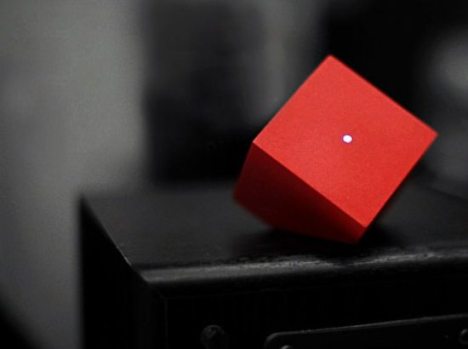Transforming Nostalgia: A Comprehensive Guide to Converting Your Old Speaker into a Bluetooth Audio System

Introduction
In the age of wireless connectivity, where Bluetooth reigns supreme, there’s a profound joy in reviving old gadgets and giving them a new lease on life. One such endeavor that enthusiasts and DIY aficionados often undertake is converting old speakers into modern Bluetooth audio systems. This comprehensive guide will walk you through the process, from selecting the right components to the step-by-step installation, ensuring that your cherished vintage speaker not only retains its timeless charm but also seamlessly integrates into the wireless audio era.
Understanding the Basics
1. Assessing the Speaker:
- Before embarking on the conversion journey, evaluate the condition of your old speaker. Ensure that the speaker itself is in good working order and that the cabinet is structurally sound.
- Check for any signs of wear, damage, or deterioration in the speaker components.
2. Choosing the Right Bluetooth Module:
- Select a Bluetooth module that suits your needs. These modules come in various shapes and sizes, with features such as aptX support for higher audio quality.
- Ensure compatibility with your old speaker’s specifications and the input options available.
3. Gathering Tools and Materials:
- Collect the necessary tools, including a soldering iron, soldering wire, screwdrivers, and heat shrink tubing.
- Gather materials such as wires, connectors, and a power source for the Bluetooth module.
Step-by-Step Conversion Process
4. Speaker Disassembly:
- Carefully disassemble your old speaker, taking note of the locations of screws, components, and wiring.
- Document the disassembly process with photographs to aid reassembly later.
5. Locating Speaker Wires:
- Identify the input terminals on the speaker where the audio signals are delivered.
- Determine the positive and negative terminals, typically marked with color-coded indicators.
6. Connecting Bluetooth Module:
- Connect the Bluetooth module to the speaker terminals using soldering.
- Solder the positive and negative wires from the Bluetooth module to the corresponding terminals on the speaker.
7. Power Supply Integration:
- Determine the power requirements of your Bluetooth module and integrate a suitable power source.
- This may involve connecting the module to the existing power supply of the speaker or incorporating a new power source.
8. Adding an External Antenna:
- Some Bluetooth modules benefit from an external antenna for improved signal reception.
- Integrate an external antenna, ensuring it is positioned for optimal signal strength.
9. Securing and Insulating Connections:
- Secure the soldered connections by applying heat shrink tubing to insulate and protect the wires.
- Ensure that the connections are stable and well-insulated to prevent short circuits or interference.
10. Reassembling the Speaker:
- Reassemble the speaker components, referring to the photographs taken during disassembly.
- Double-check all connections, ensuring that wires are properly routed and secured.
Configuring and Using Your Bluetooth Speaker
11. Pairing and Testing:
- Power on your newly converted Bluetooth speaker and put it in pairing mode.
- Pair your smartphone or other Bluetooth-enabled devices to test the audio playback.
12. Adjusting Settings and Fine-Tuning:
- Explore the settings of your Bluetooth module to customize audio preferences, such as equalization and volume control.
- Fine-tune the settings based on your preferences and the capabilities of your old speaker.
13. Ensuring Compatibility:
- Confirm compatibility with various devices, ensuring that your Bluetooth speaker seamlessly connects to smartphones, tablets, and other gadgets.
- Troubleshoot any connectivity issues and update firmware if necessary.
Enhancements and Customization
14. Adding LED Indicators:
- Enhance the visual appeal of your Bluetooth speaker by incorporating LED indicators for power, pairing status, and battery level (if applicable).
- LED indicators provide both functional information and aesthetic charm.
15. Upgrading Audio Components:
- Consider upgrading internal audio components, such as capacitors or resistors, to improve audio quality.
- Consult with audio enthusiasts or professionals for advice on enhancing your speaker’s performance.
16. Building a New Enclosure:
- For those feeling adventurous, building a new enclosure can further enhance the aesthetics and acoustics of the Bluetooth speaker.
- Choose materials that resonate well with the vintage charm of your old speaker.
Troubleshooting and Maintenance
17. Addressing Audio Distortion or Interference:
- If you encounter audio distortion or interference, review the soldered connections and ensure proper insulation.
- Adjust the placement of the Bluetooth module and antenna to minimize interference.
18. Battery-Powered Options:
- If your Bluetooth module supports battery operation, consider integrating a rechargeable battery for a truly wireless experience.
- Choose a battery with sufficient capacity to meet your usage requirements.
19. Regular Maintenance and Inspections:
- Periodically inspect and clean the internal components to prevent dust accumulation.
- Address any issues promptly to maintain the longevity of your Bluetooth speaker.
Conclusion: A Harmonious Fusion of Old and New
Converting your old speaker into a Bluetooth audio system is not just a technical feat; it’s a creative endeavor that bridges the nostalgia of the past with the convenience of the present. As you embark on this journey, relishing the process of soldering, configuring, and testing, you breathe new life into a device that holds sentimental value.
In the harmonious fusion of old and new, your Bluetooth-enabled vintage speaker becomes a testament to the enduring appeal of craftsmanship. With careful execution and a dash of creativity, you not only create an audio system that blends seamlessly with your contemporary lifestyle but also preserve the charm of bygone eras. As your newly transformed Bluetooth speaker fills the room with rich, wireless sound, it stands as a symbol of innovation, resourcefulness, and a deep appreciation for the timeless beauty of audio craftsmanship.




